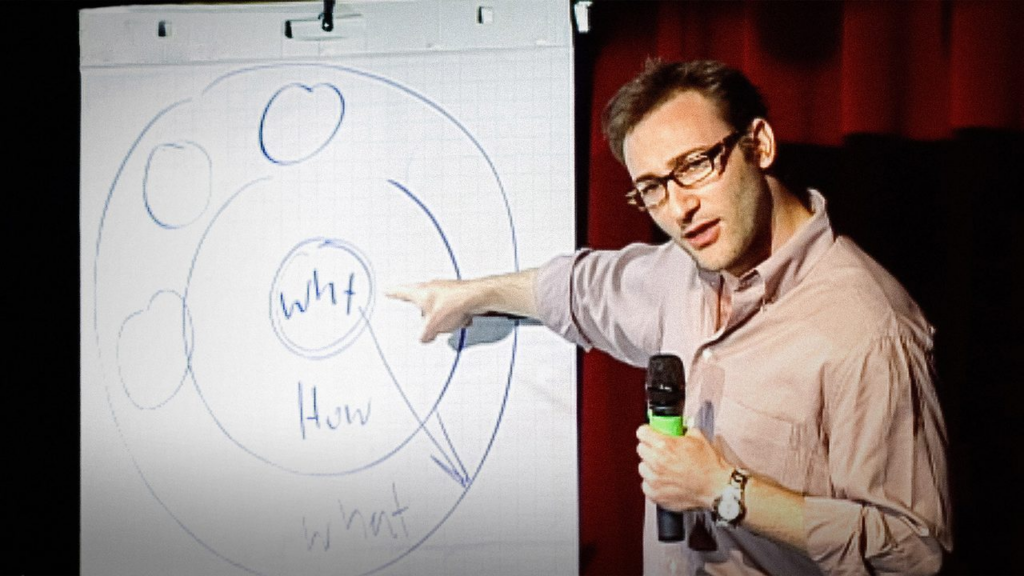Emily Wolf, web designer, explains the meaning behind the tribal devotion buzzword and challenges us to embrace it, especially in the dynamic brand-to-customer world in which we live today.
If you were to describe yourself through the brands you love, which would they be…and why? We likely don’t love all the same brands, but the reason we love them is probably similar: we love brands that understand us and support the life we live (or the life we desire to live).
If you’ve listened to our podcast, you’ve likely heard us say:
“Welcome to the Design of Experience: Conversations about the ideas that make us feel a tribal devotion to the things we love.”
Tribal devotion. Yes, we chose that phrase specifically because of the emotional depth and commitment it represents towards the brands we each love. But before we jump into that discussion, let’s go back to 2009…
Starting with Why
Ten years ago, Simon Sinek spoke at a TEDx gathering about how great leaders inspire action, and his message quickly became (and remained) one of the most-watched TED talks of all time. Throughout his talk he repeated the phrase, “People don’t buy what you do. They buy why you do it.”

The bullseye he drew (see above) communicated the idea that most leaders (and businesses) approach their work from the outside in: they start with what they are going to do and then figure out how they are going to do it, and then maybe they get to why they are doing it.
Inspirational leaders start in the middle and work their way out: they are deeply passionate and care about something and this becomes their why. Then they consider how they can take that why and turn it into something tangible, their what.
Why start with why? Because “The goal is not to do business with everybody who needs what you have. The goal is to do business with people who believe what you believe,” says Simon.
Defining Tribal Devotion
This idea of starting with why is the exact reason that we feel a sense of tribal devotion to the brands we love. Tribal devotion is the emotional and behavioral result of a brand genuinely seeking to establish what it is that holds meaning for their customers and then seeking to support those things through their business (Tribal Marketing, Tribal Branding by Brendan Richardson, page 14). Tribal devotion means we love the brand, we talk about the brand, and we don’t want to imagine our lives without the brand.
Tribal devotion is the emotional and behavioral result of a brand genuinely seeking to establish what it is that holds meaning for their customers and then seeking to support those things through their business.
Engaging in Brand Co-Creation
Some brands take tribal devotion a step deeper and engage in what Richardson calls brand co-creation: “It sometimes means they [the tribe] engage in innovation and help with the development of new products. It means that they help to differentiate the brand. It represents a chance to shift from the monologue approach of conventional marketing, towards a more transparent and truly interactive relationship between brands and consumers.” (Tribal Marketing, Tribal Branding by Brendan Richardson, page 14)
A great example of this is when a six-grade girl reached out to Athleta, a women’s and girl’s clothing company, asking them to make a sweatshirt with more pockets, specifically so she could carry her diabetic receiver and keep playing, and they followed through by developing the product. Or, on a larger scale, when IKEA launched Co-Create IKEA, a digital platform encouraging customers and fans to develop new products or identify problems, and then improved their products from the valued input.
Developing Tribal Devotion
So, what are some ways to develop tribal devotion? Here are five ideas to get you in the right mindset:
- You need to be all in for your customers and your people (their desires and beliefs align with yours and steer your ship).
- You have to be open to a two-way dialogue (audiences are no longer passive).
- You have to create based on a belief (your why) rather than a product/service (your what).
- You need to offer a portion of your product or a piece of the brand experience for free (something specific and tangible).
- You need to discover the personality of your brand (if it doesn’t have one, it has to be created).
Why Does Tribal Devotion Matter?
Simon Sinek’s talk has been around since 2009, so why are we still struggling to get people on board with the concept of starting with why and cultivating genuine tribes? Steve Smallman suggests that it’s because it takes dedicated time and effort. People tend to half step and short circuit the discovery process of their brand, and they don’t take the time to answer the question of “what is the business we’re in?”
When it comes to our daily lives, most of us want pleasant experiences amidst the routine and ordinary. We want to be understood. We want to identify with something (or not identify with something). And we do that through activities, groups of friends, and brands.
Cognition attempts to make sense of the world: emotion assigns value.
Donald Norman teaches us that “Cognition attempts to make sense of the world: emotion assigns value.” If this is true, then why not commit to discovering your brand’s why and creating for the customers who believe what you believe?

